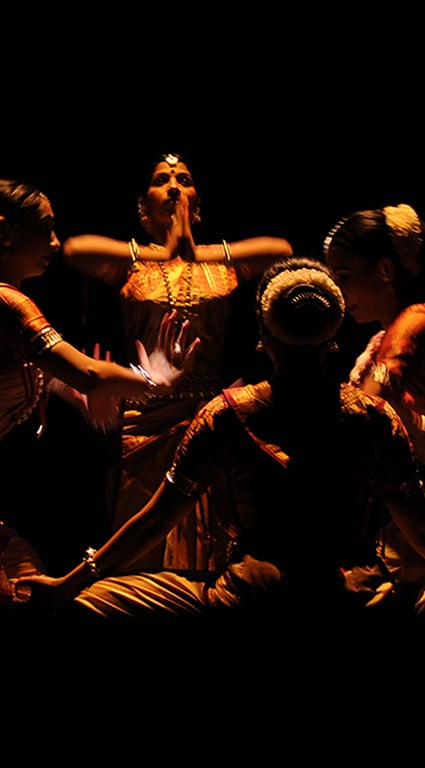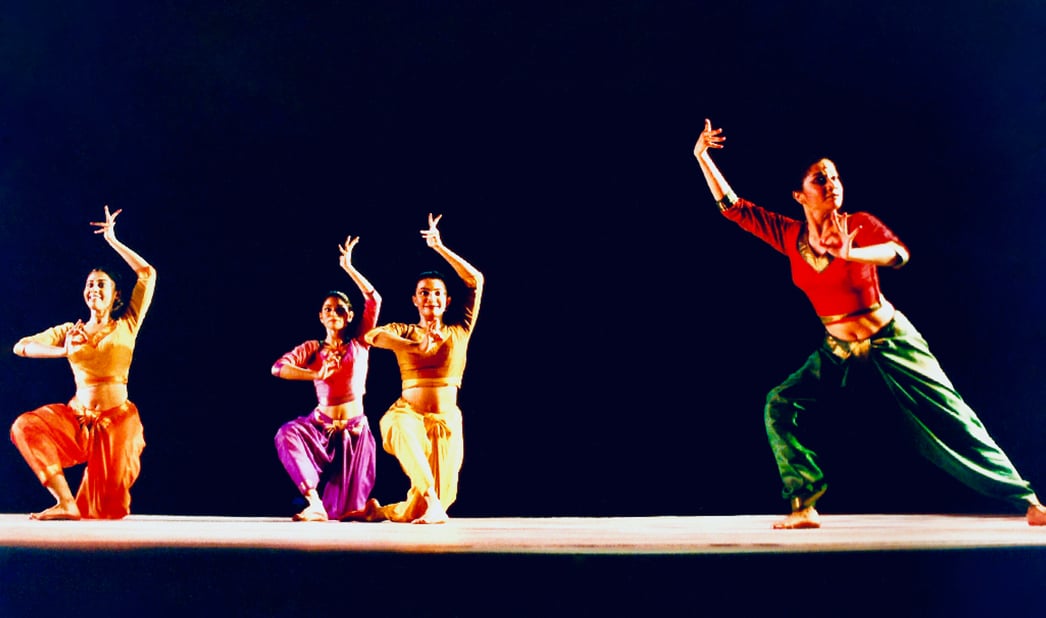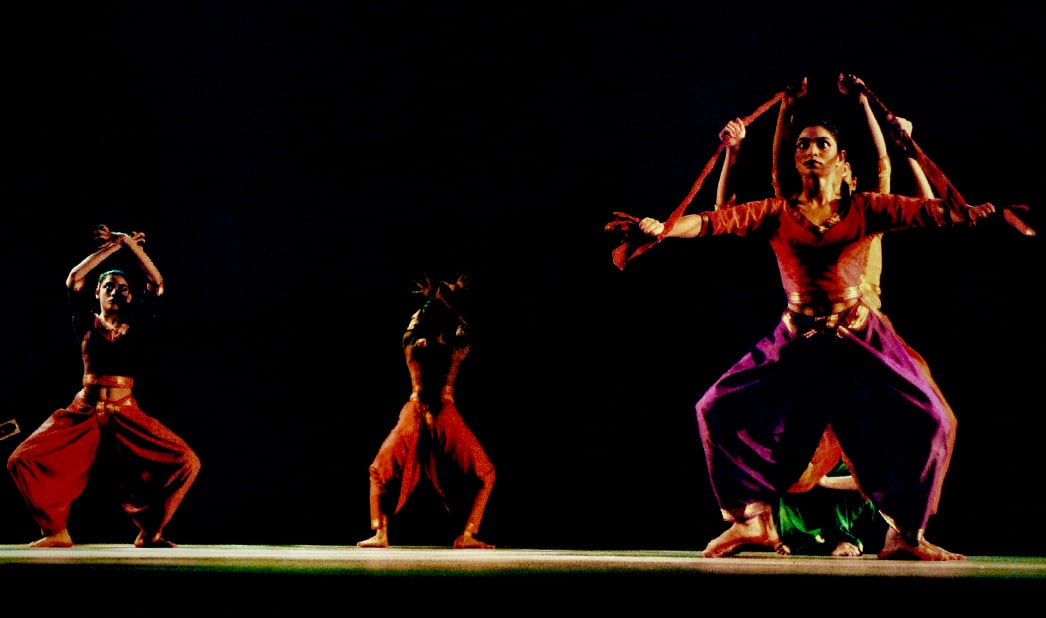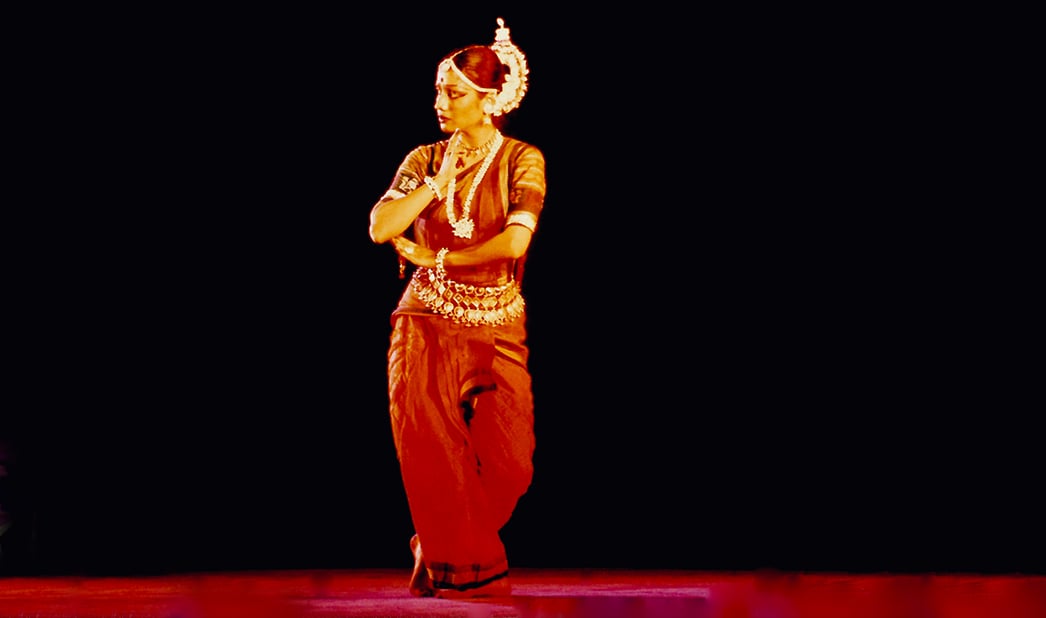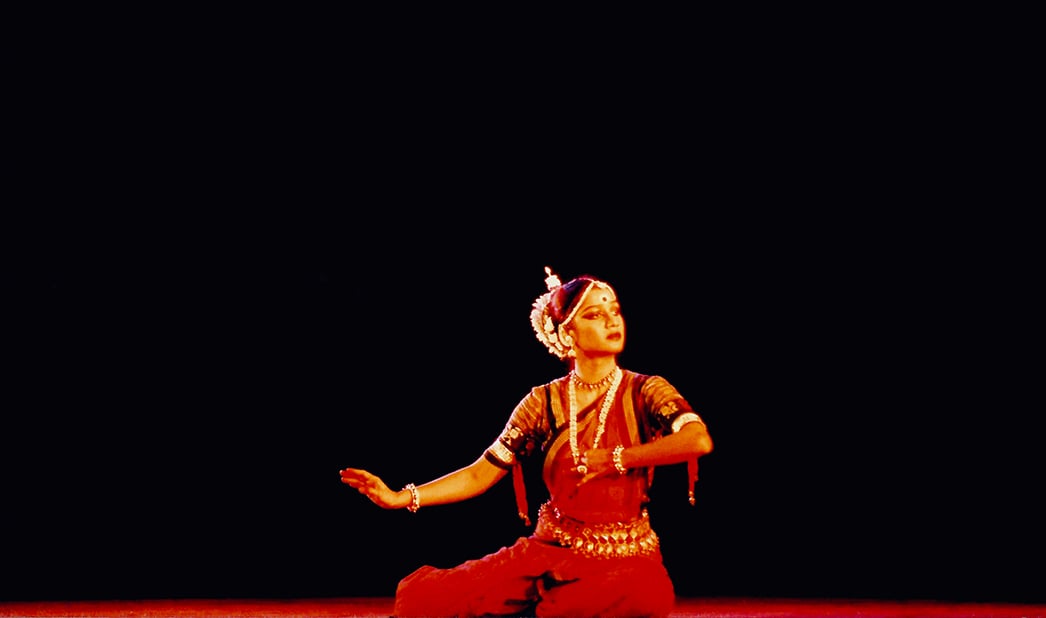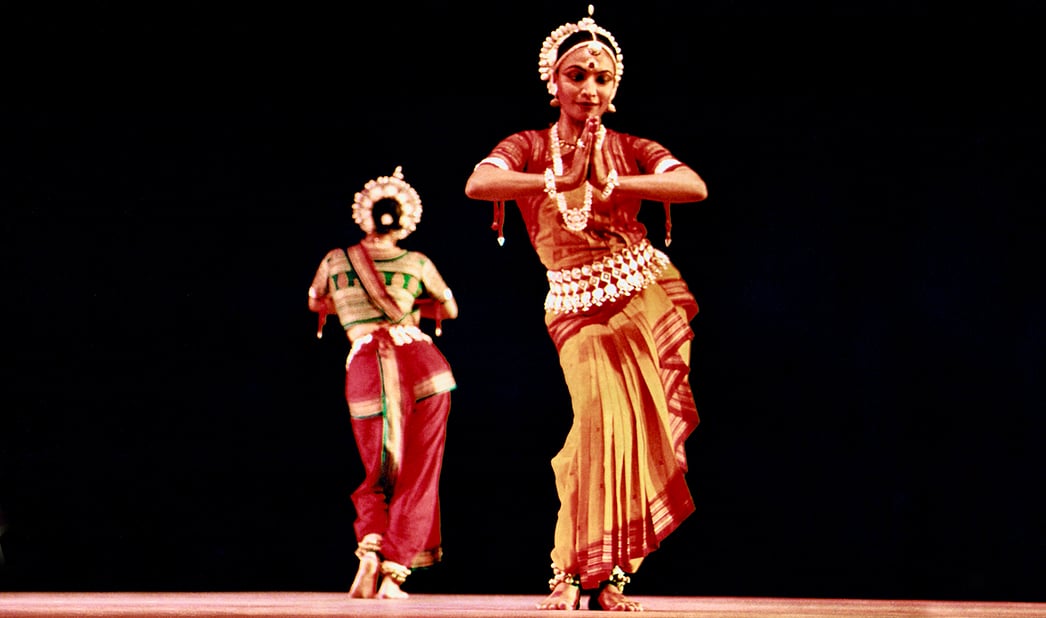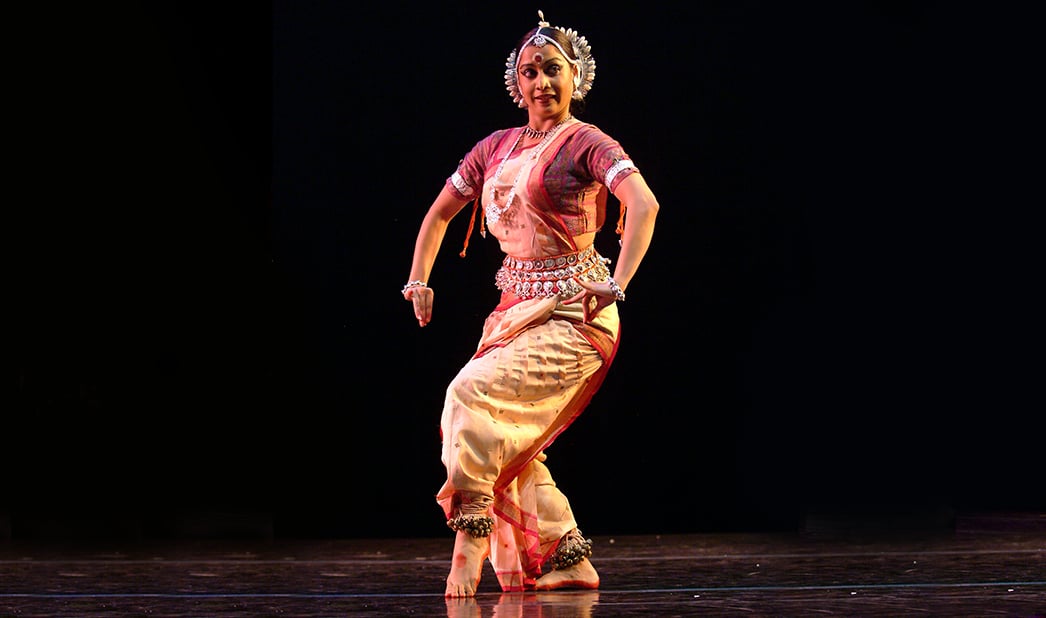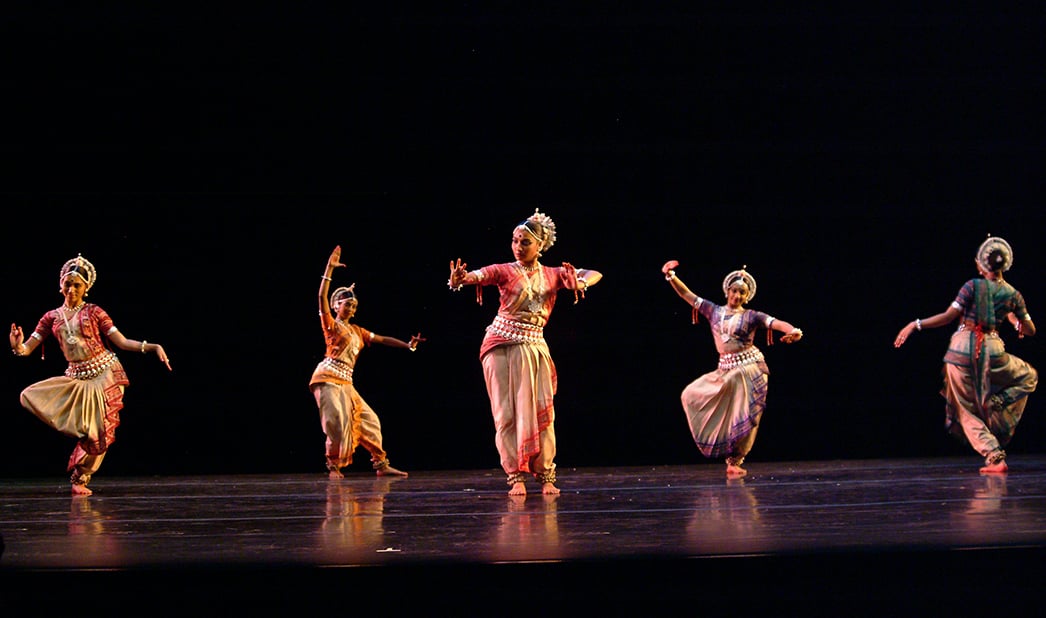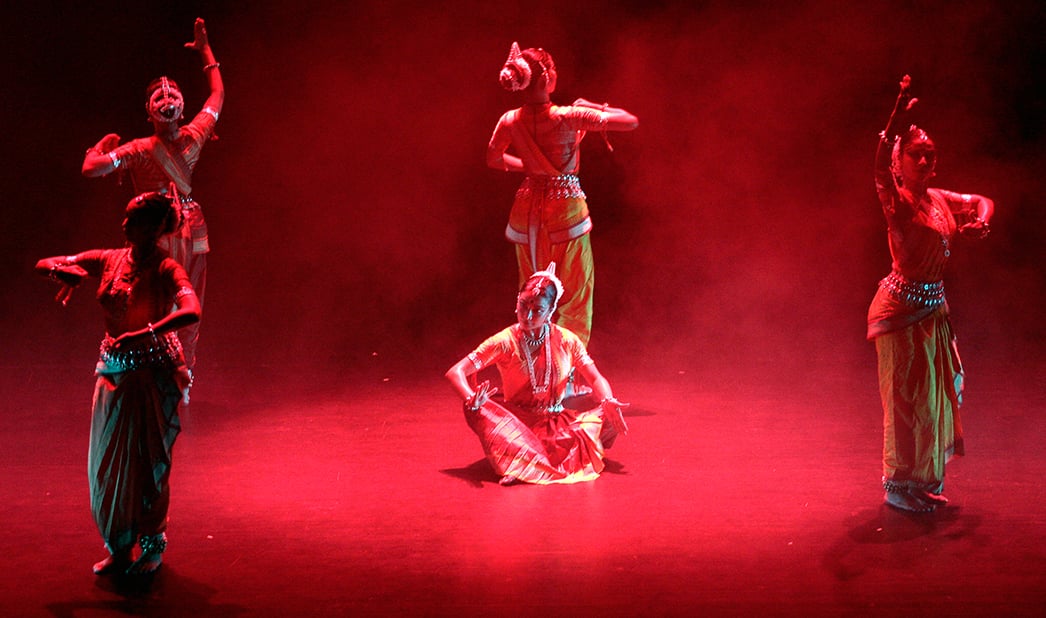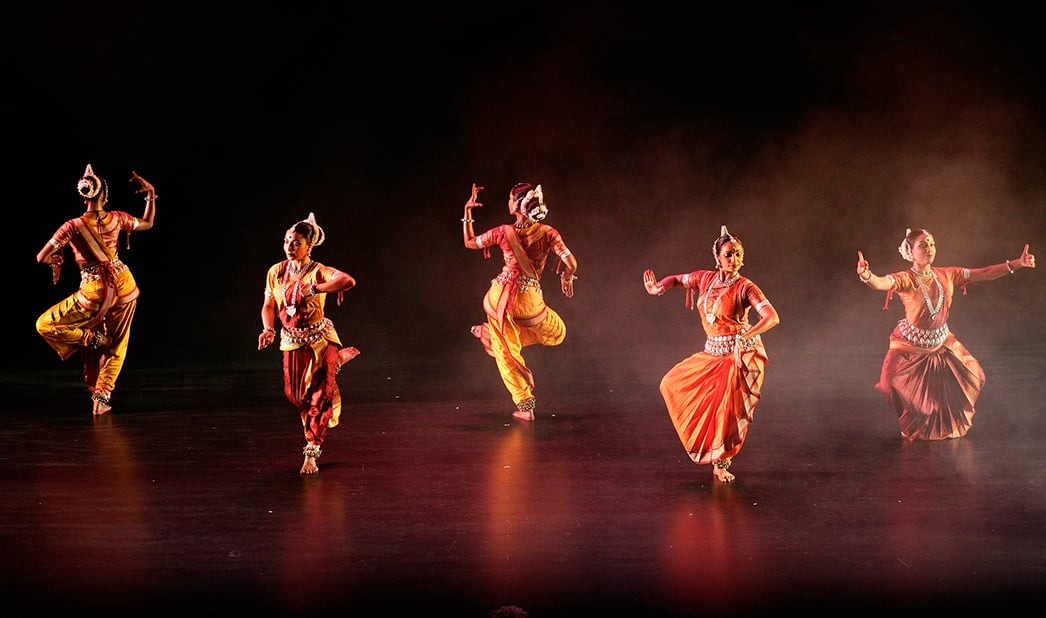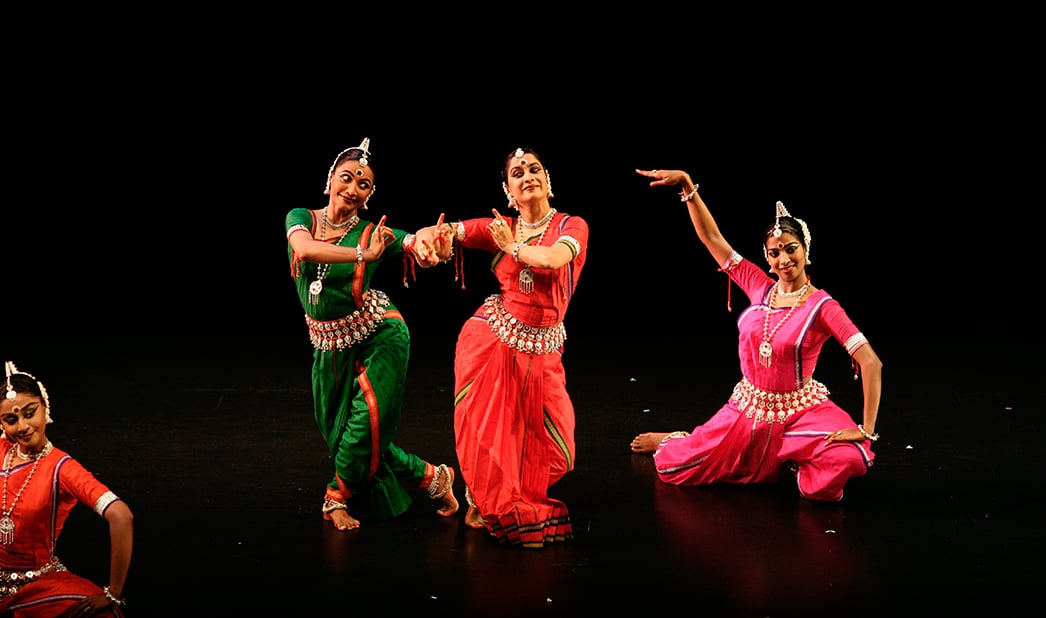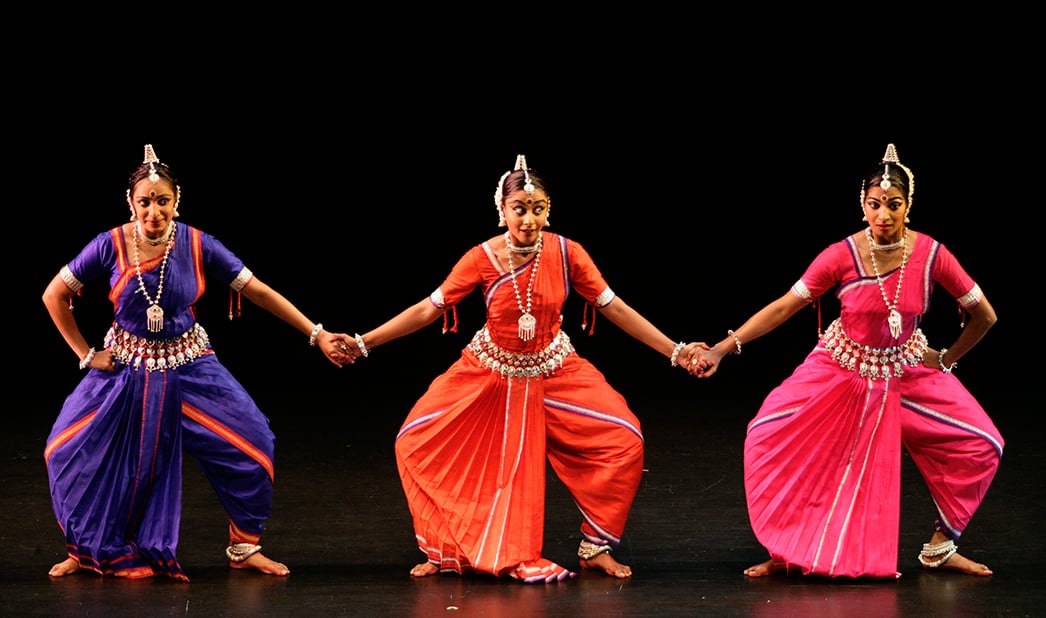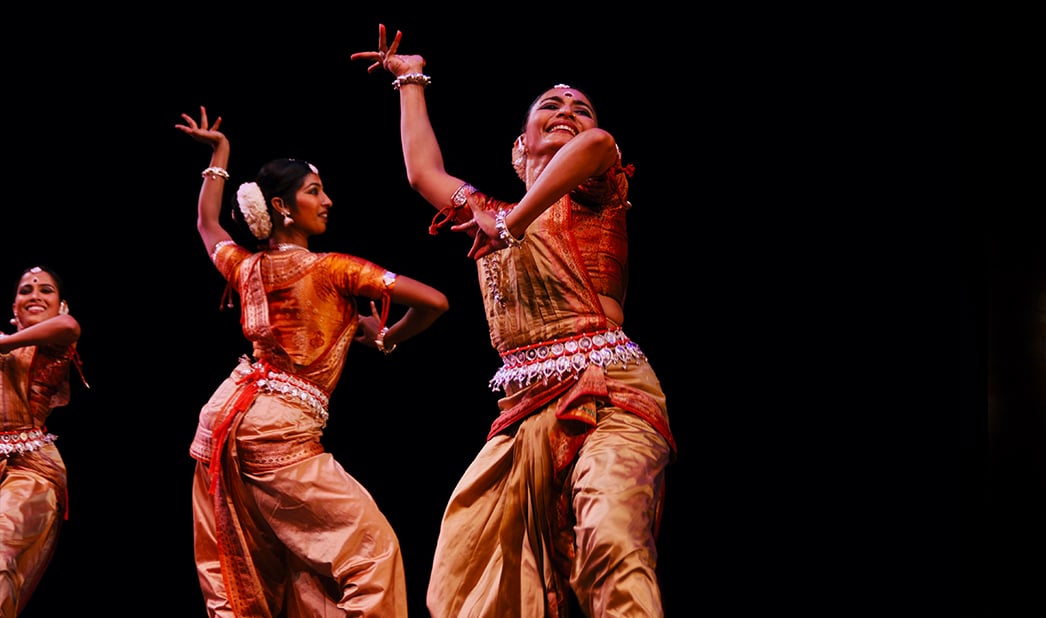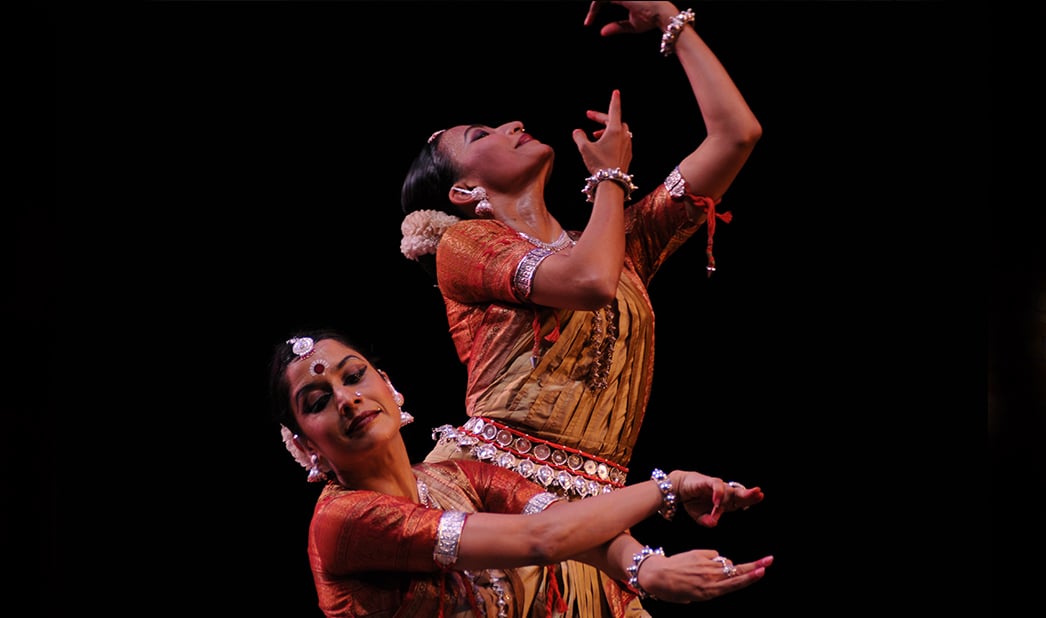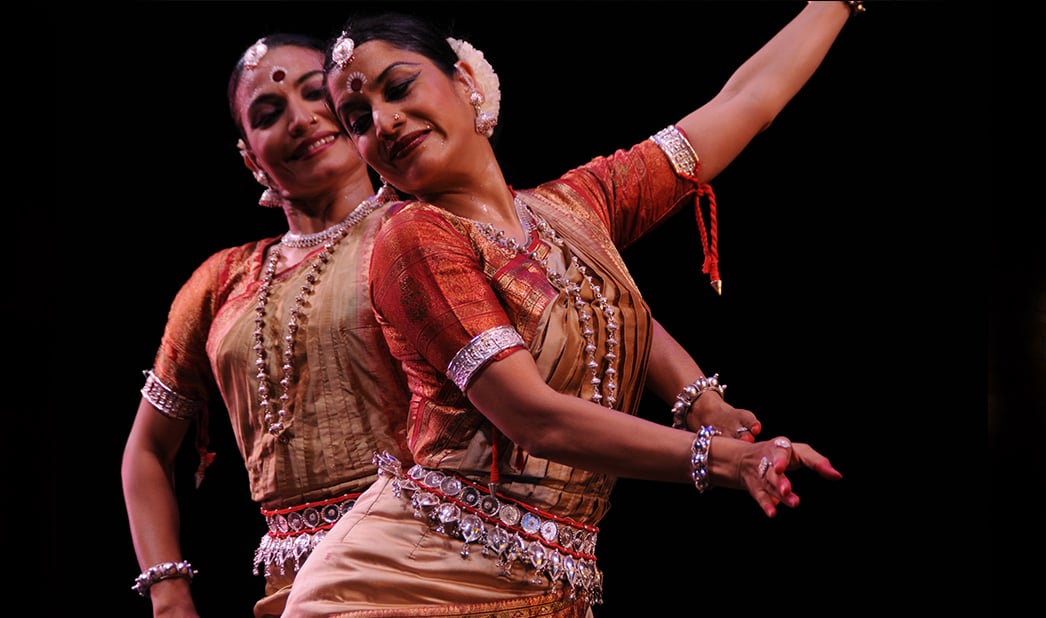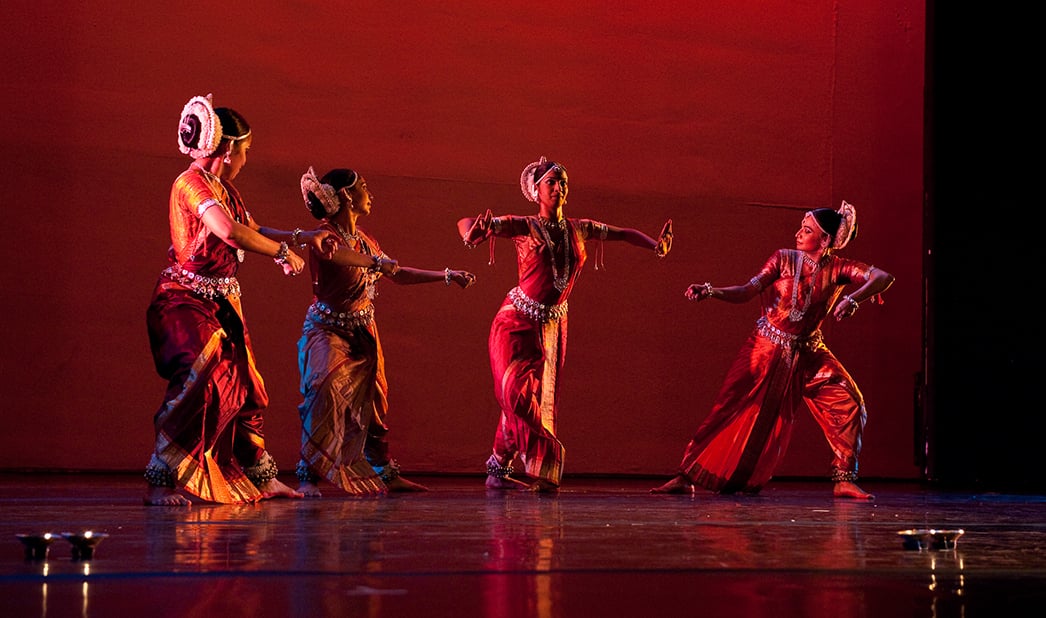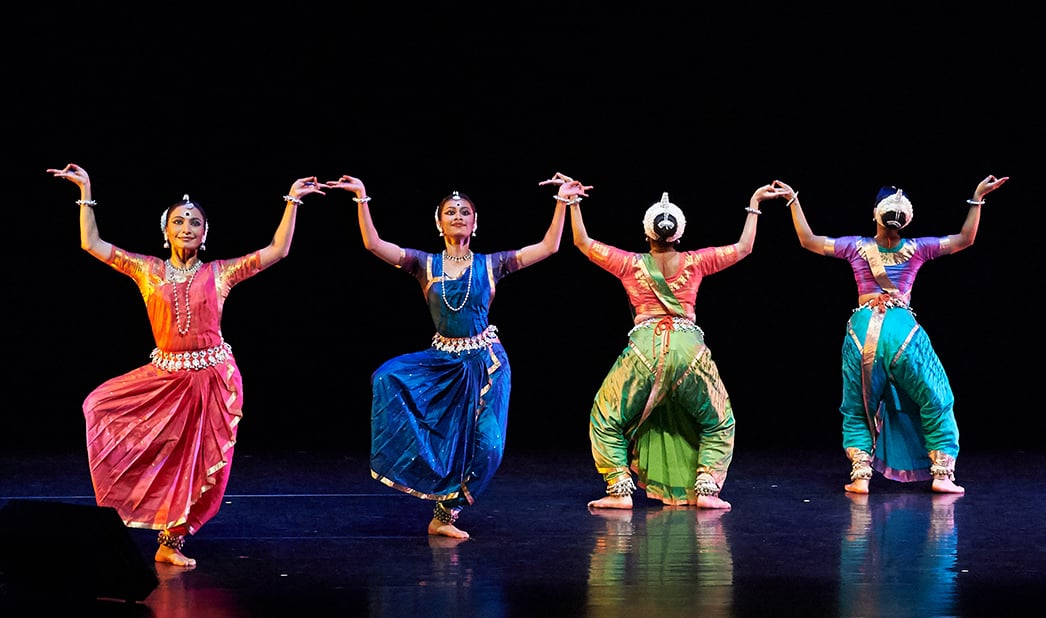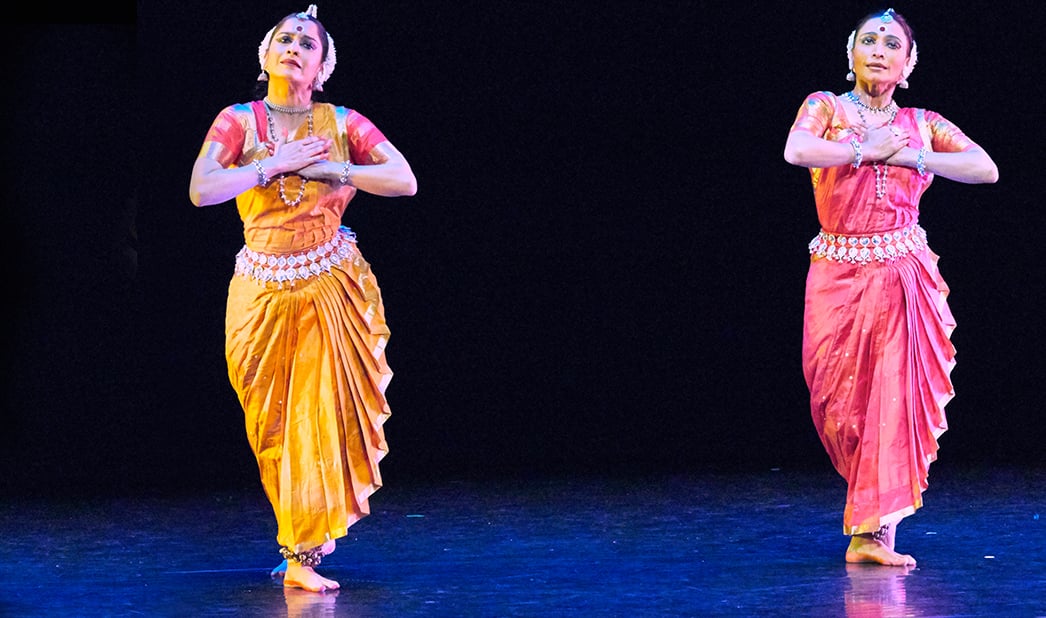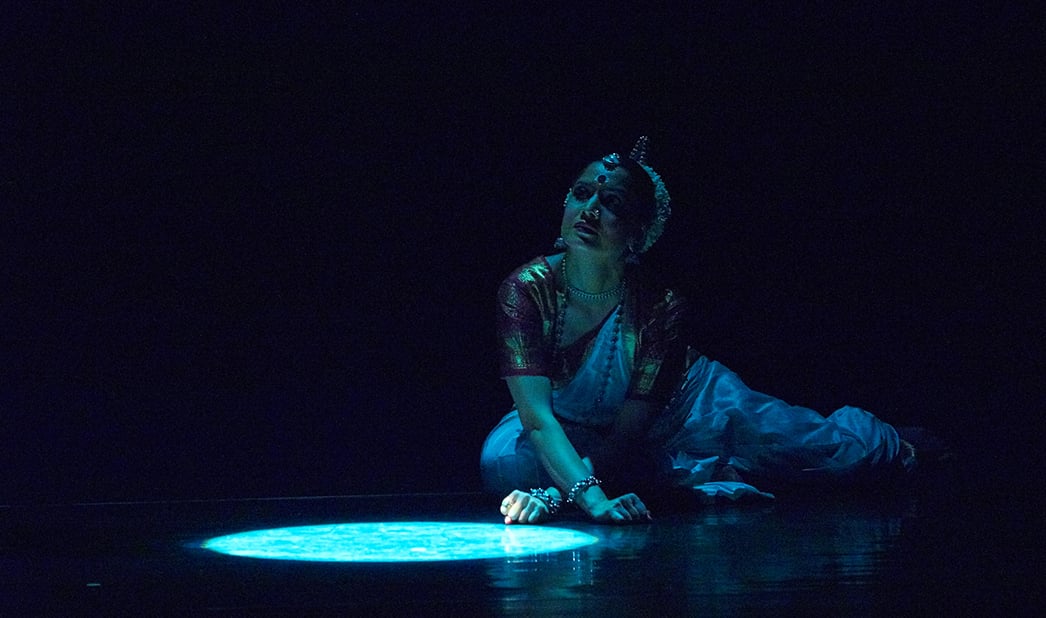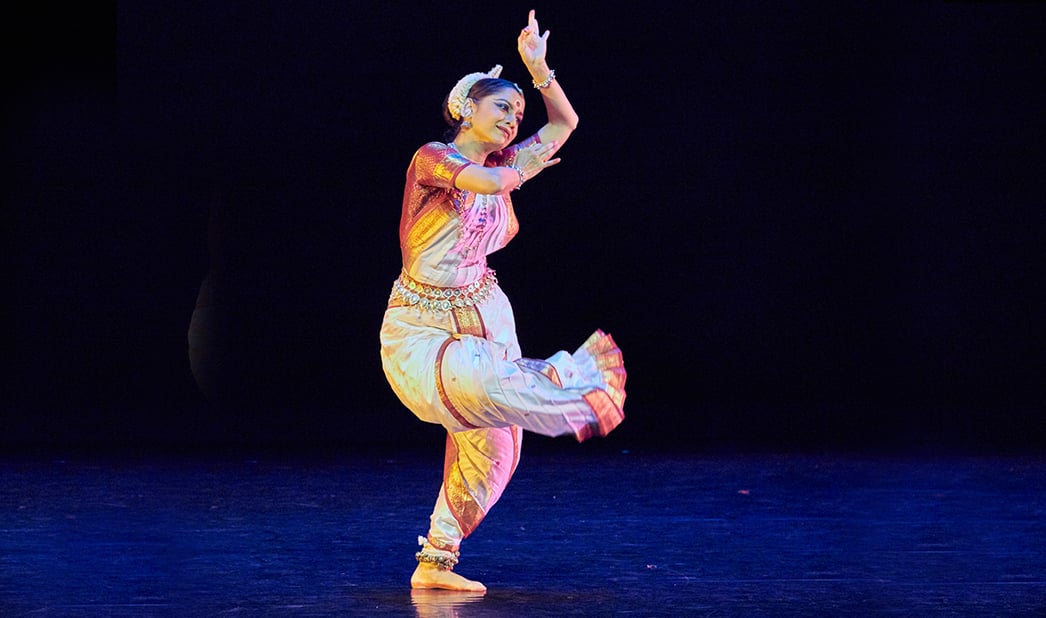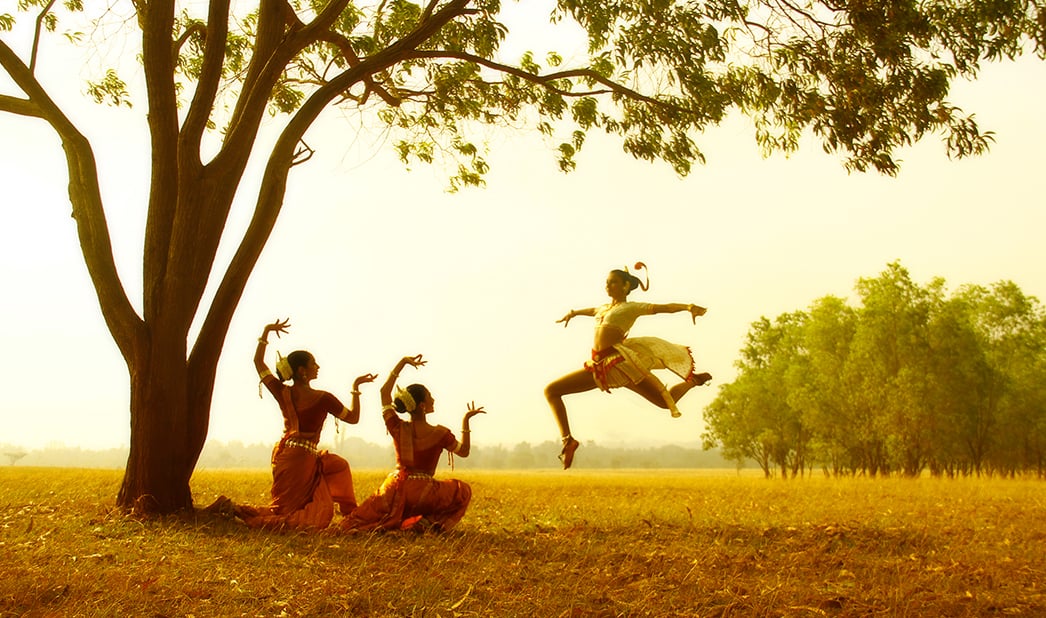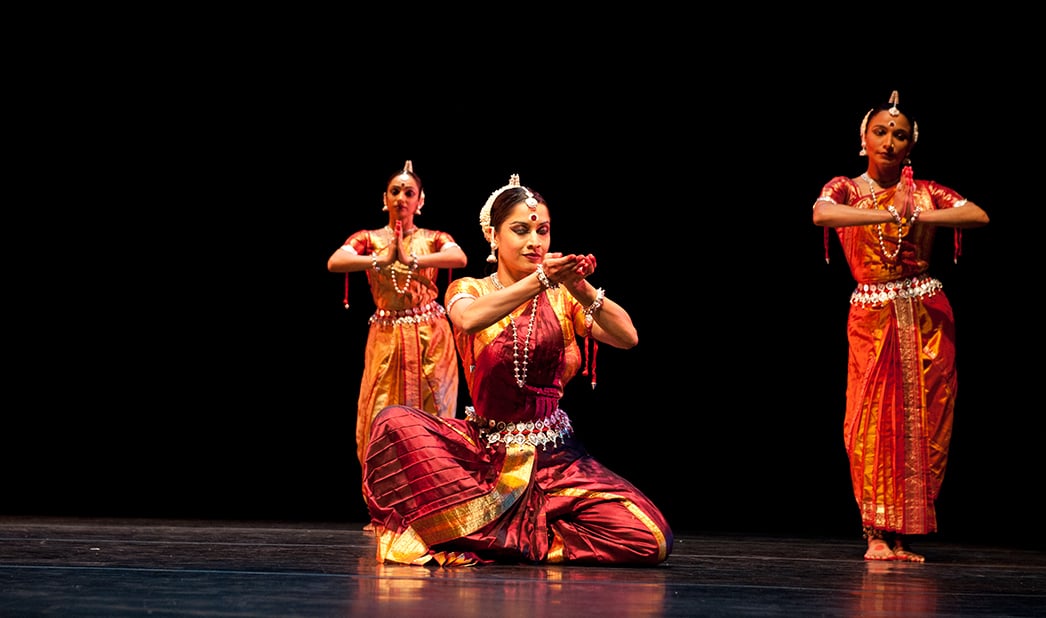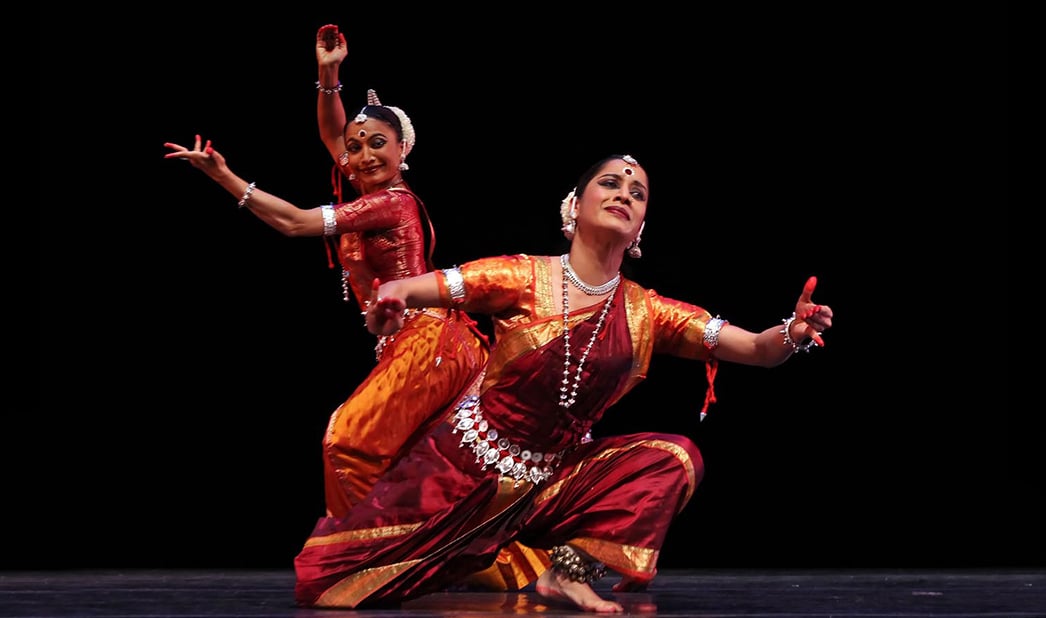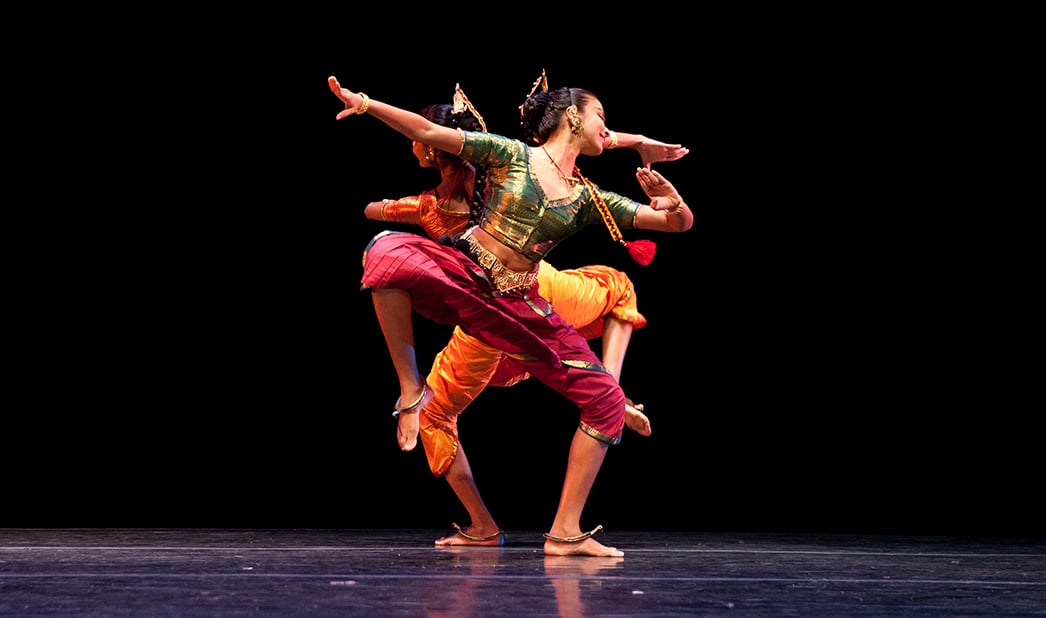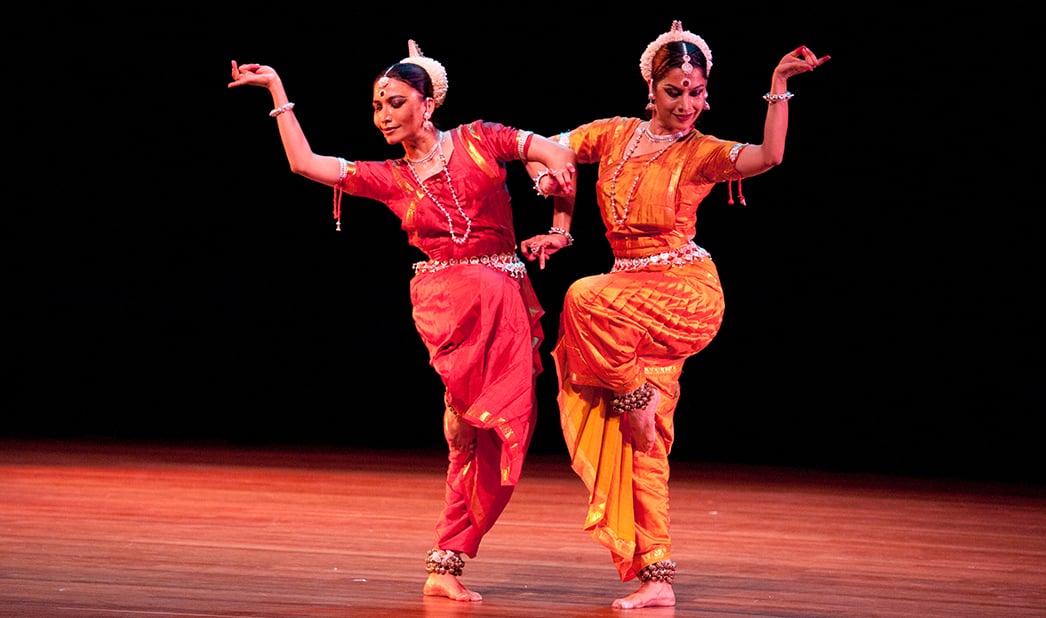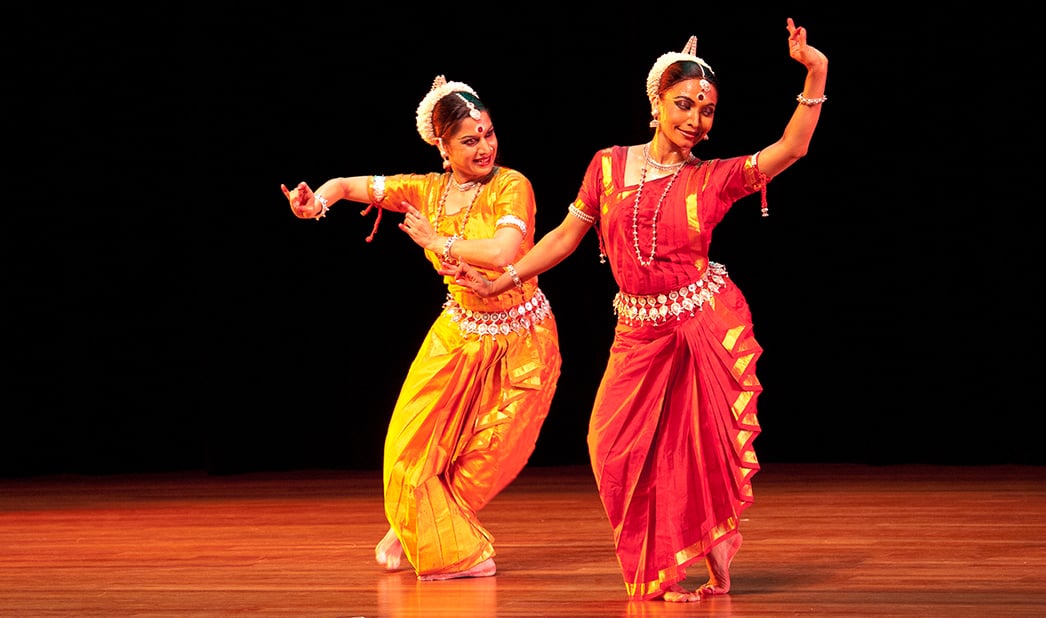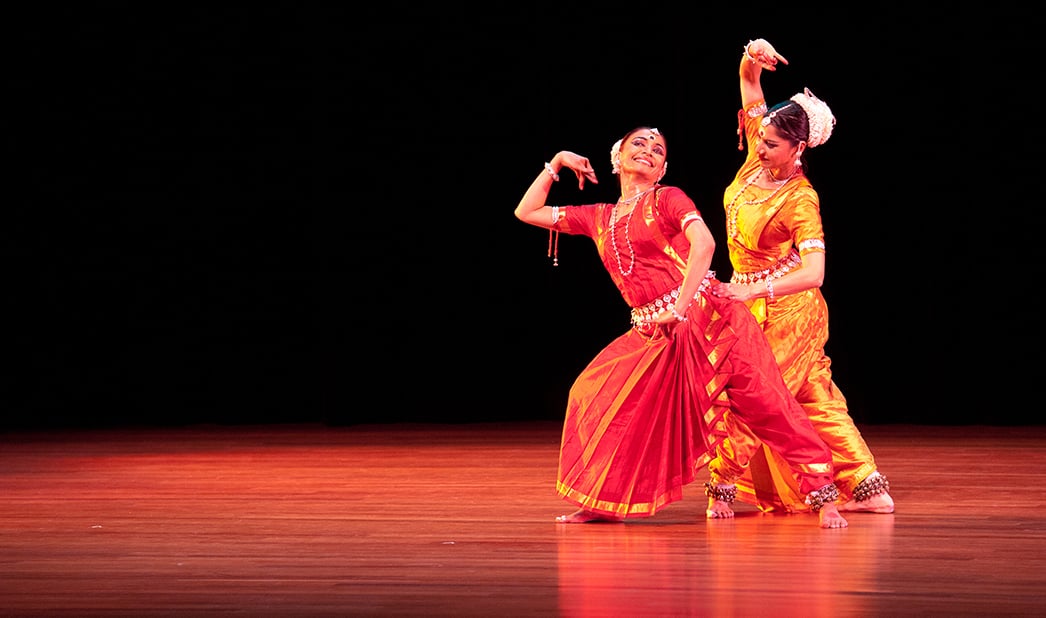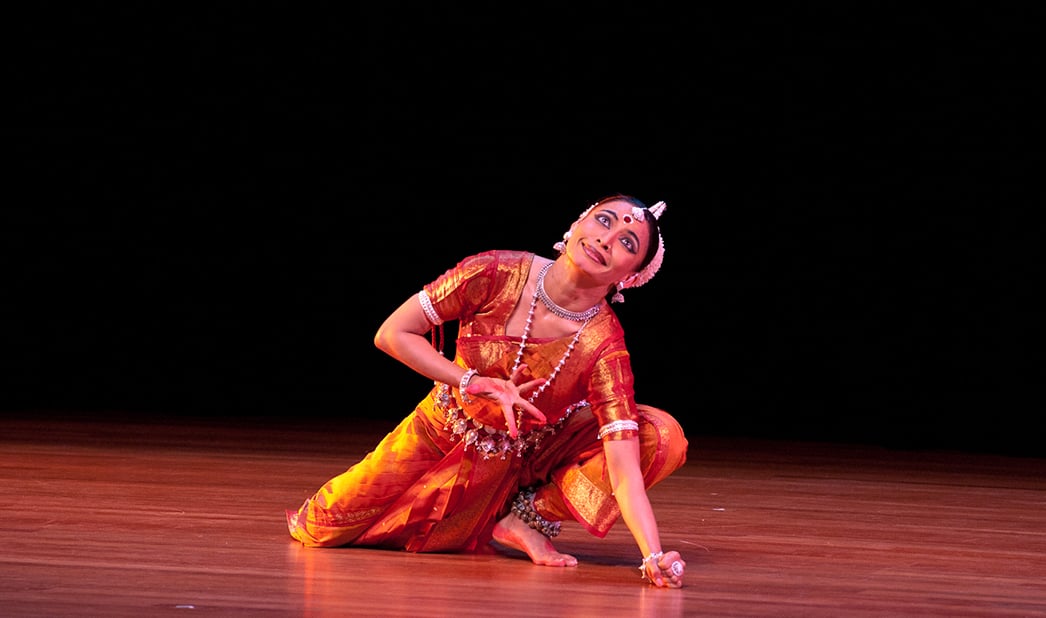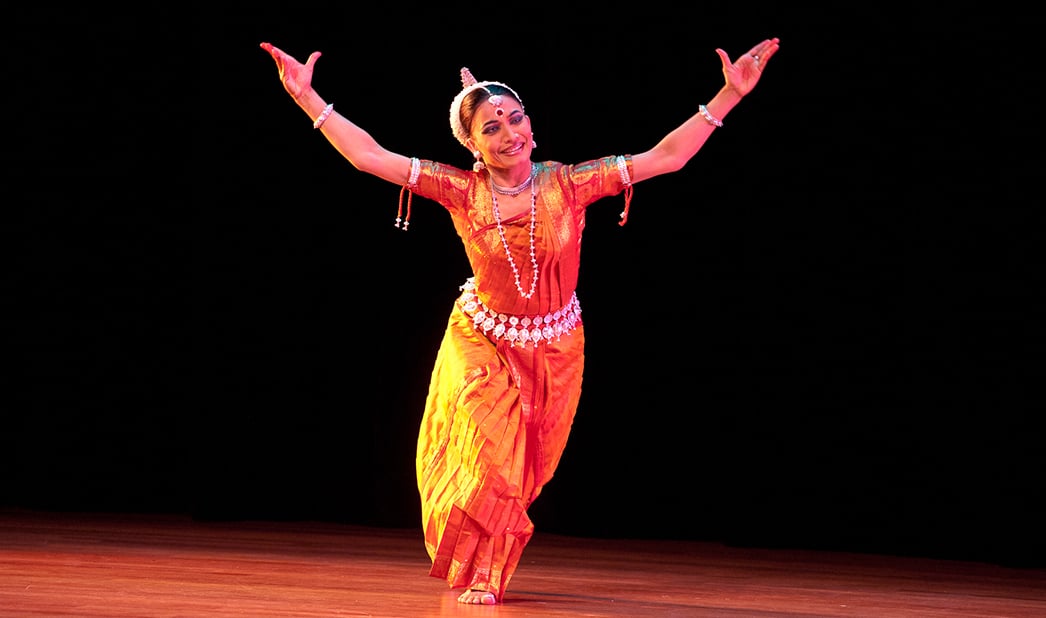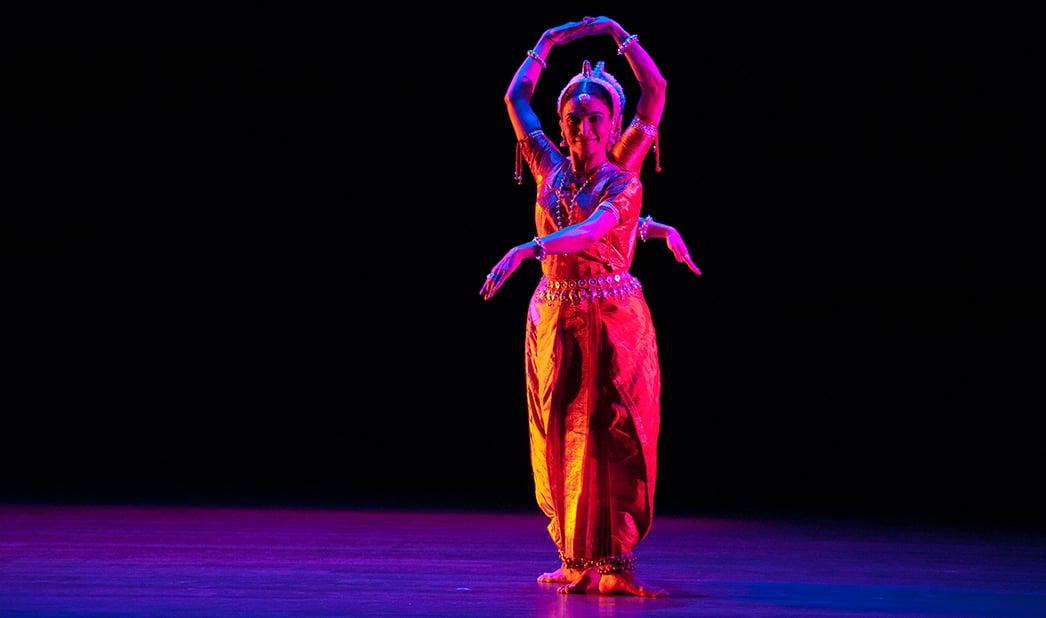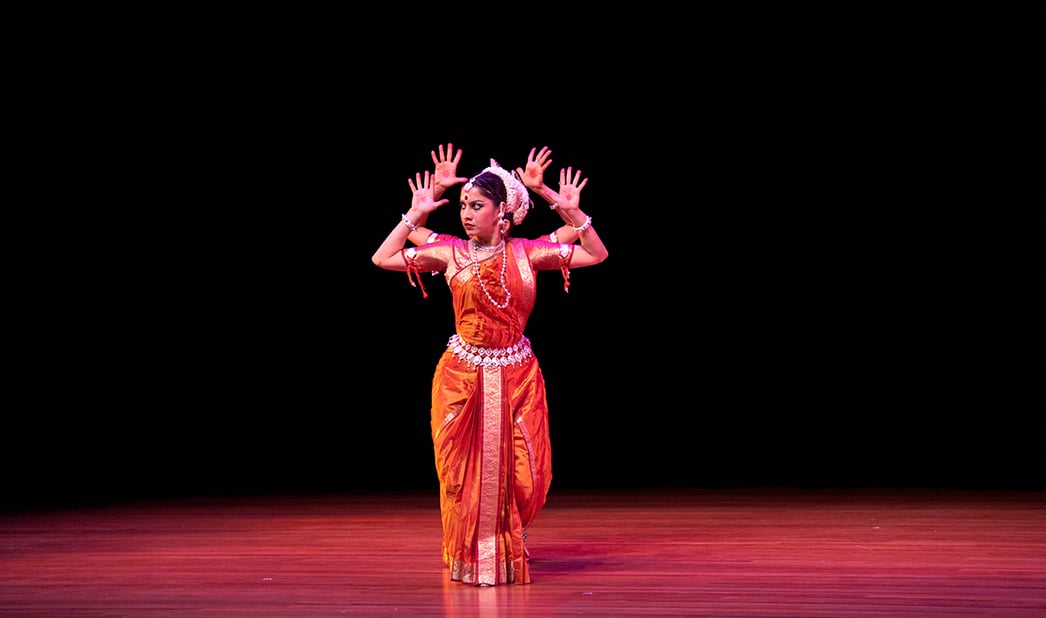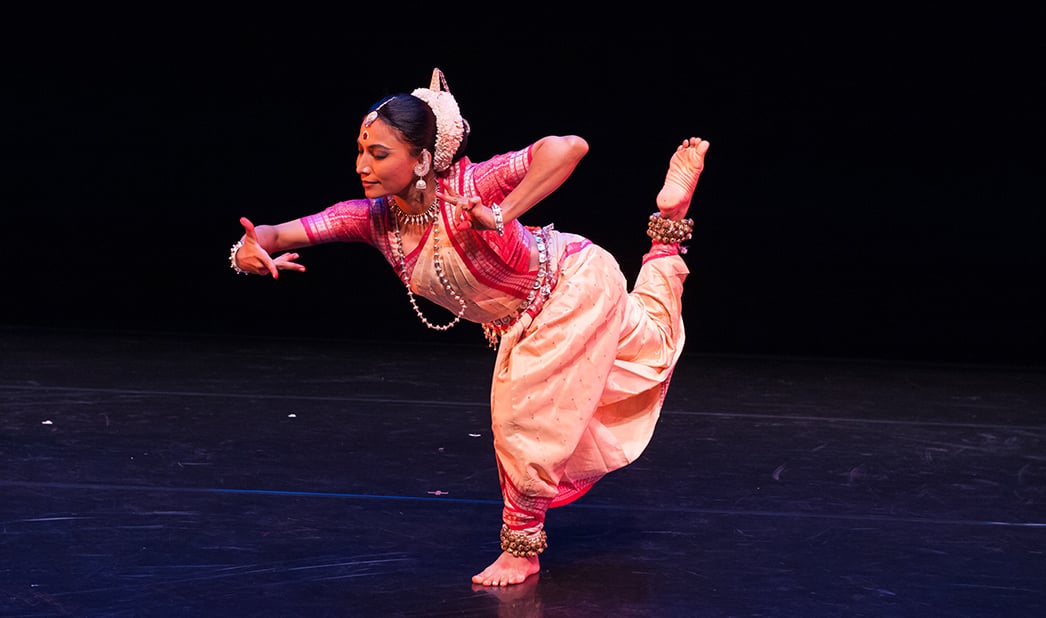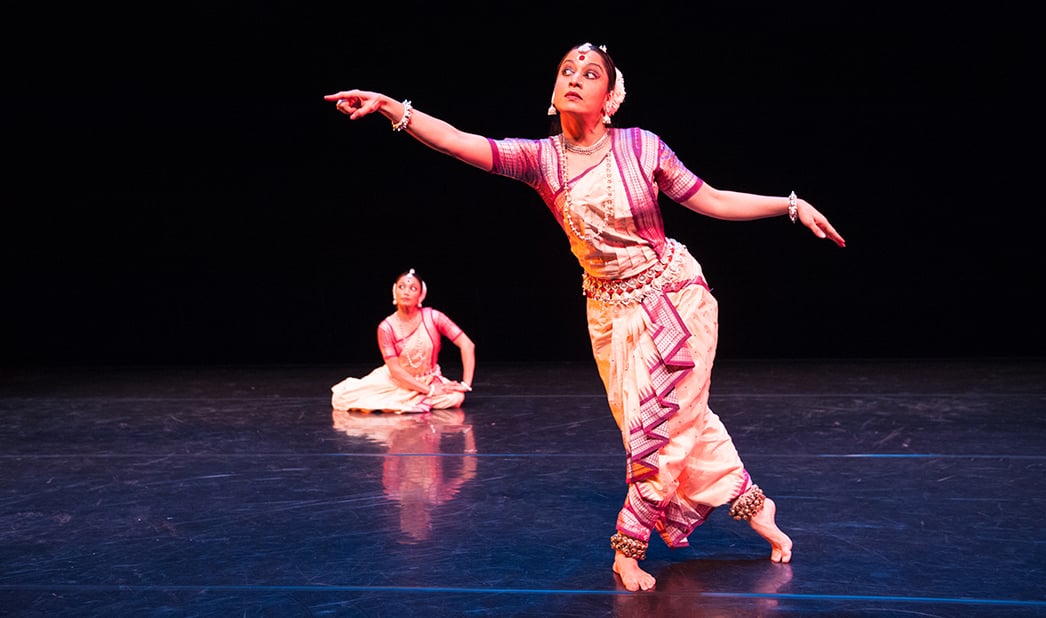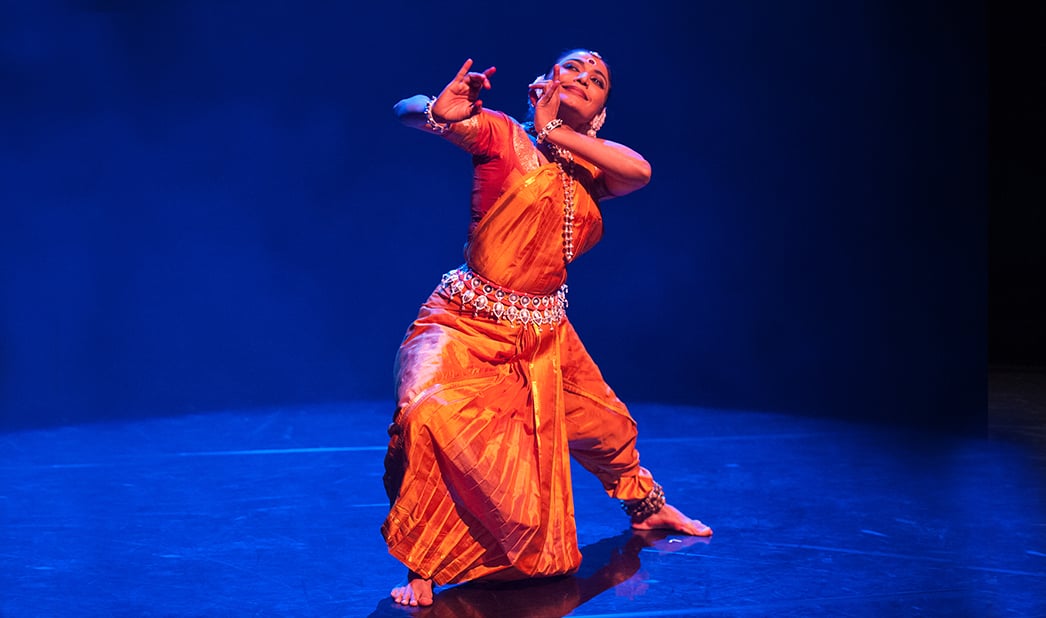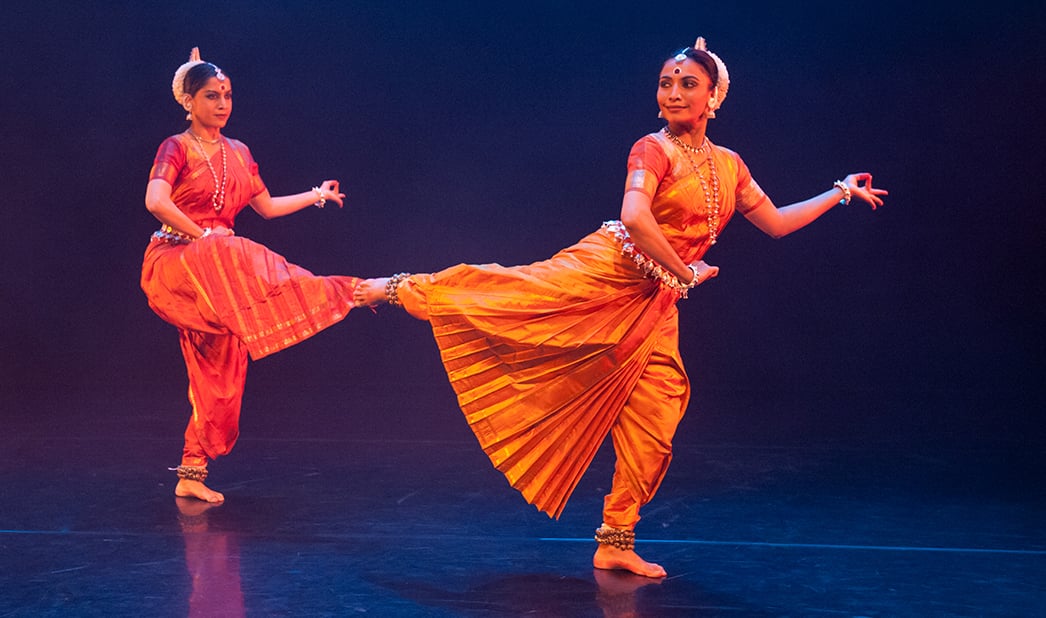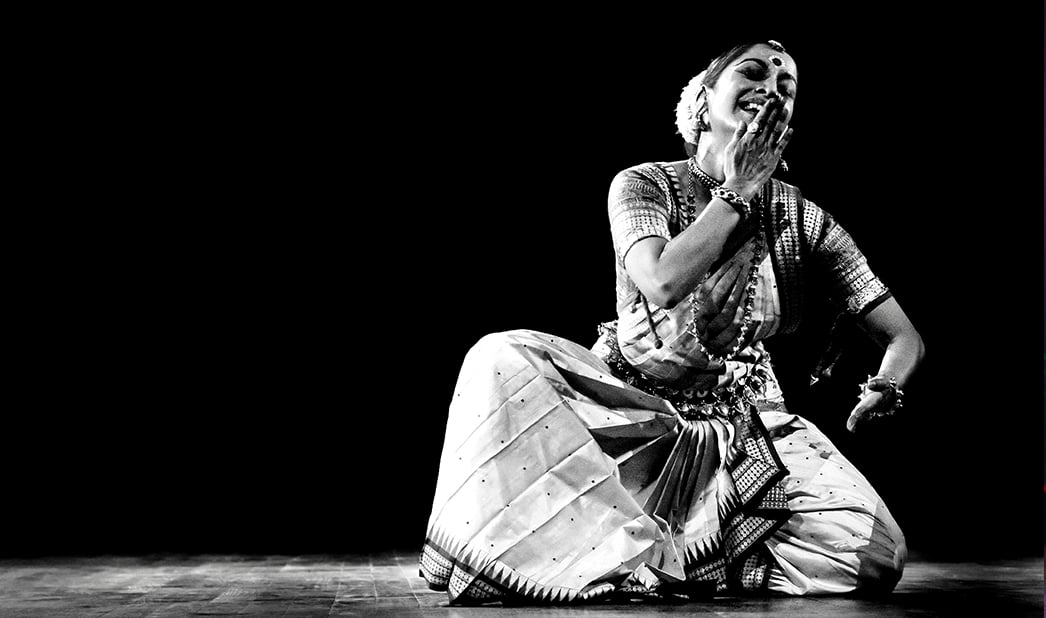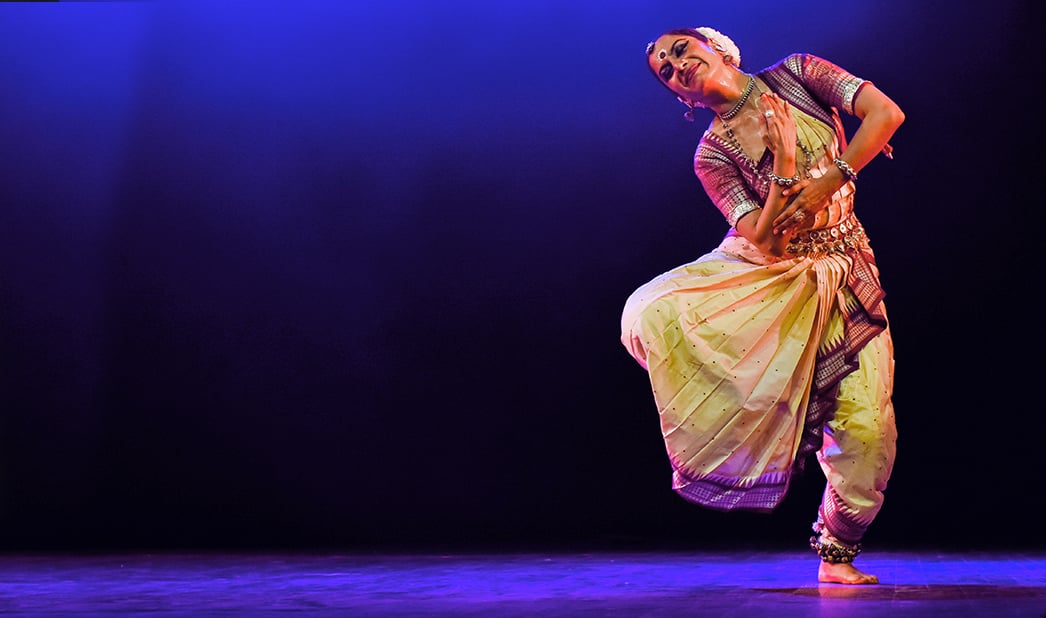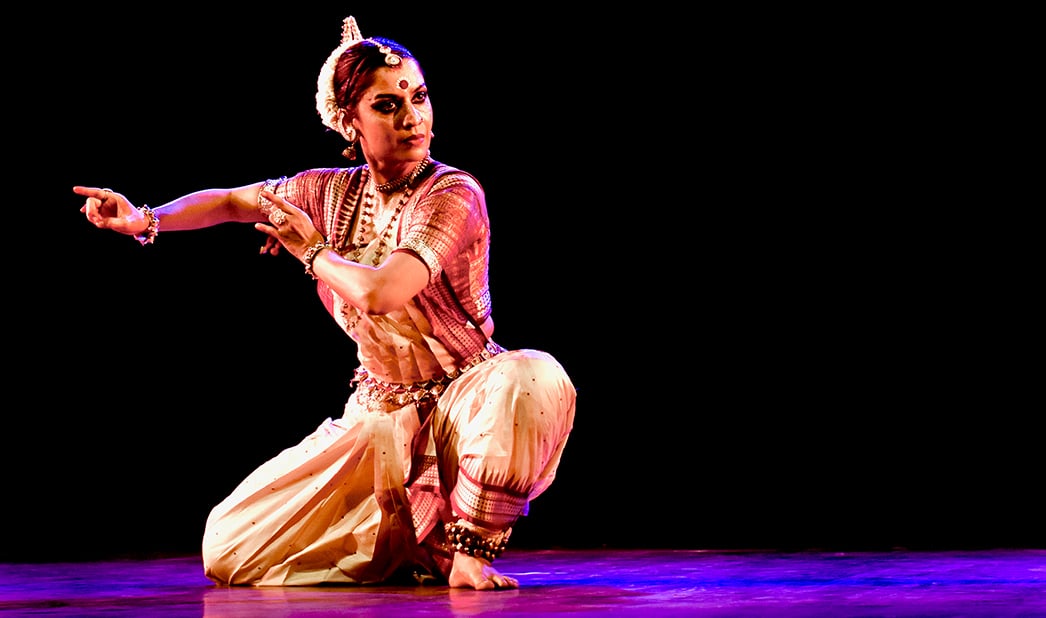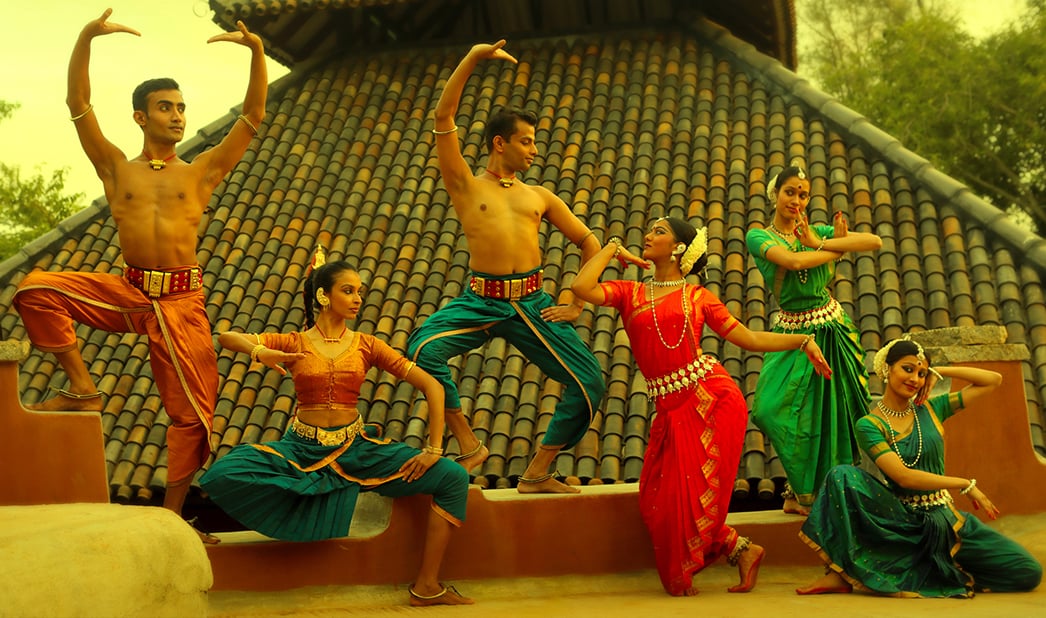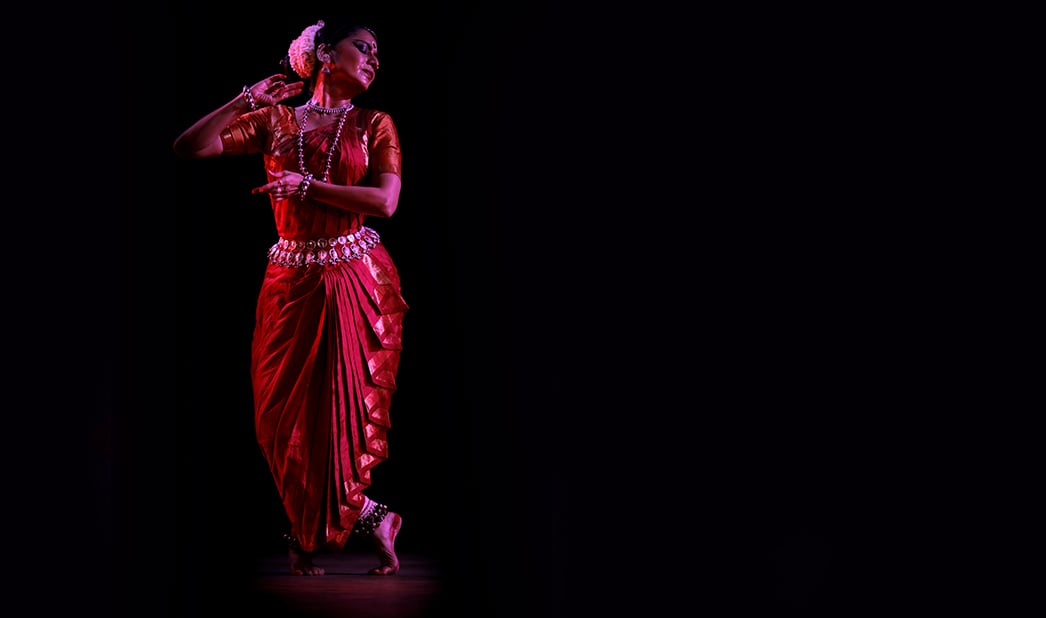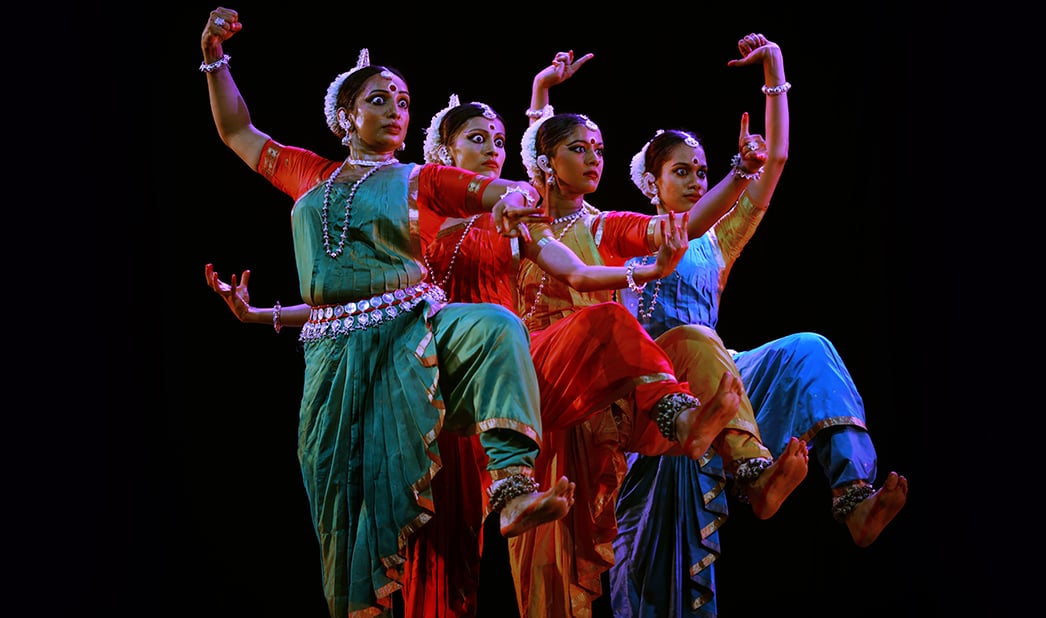Since 2000, Nrityagram’s repertoire has been choreographed by Artistic Director Surupa Sen
Śrī: In Search of the Goddess | 2001
Śrī embodies the divine female principle. In a single syllable, myriad facets of a woman are ensconced.
The performance explores female energy within the framework of Odissi. It is conceived as a search for the
Goddess within, which carries us beyond mythological images and definitions, towards a consciousness that
this world driven by the mind, rationality and power, needs in order to reach fulfilment.
Śrī: In Search of the Goddess was made possible by the Doris Duke Fund for Dance of the National Dance
Project, a program administered by the New England Foundation for the Arts, with funding from the National
Endowment for the Arts, the Doris Duke Charitable Foundation, the Andrew W. Mellon Foundation and Philip
Morris Companies, Inc.
Ansh | 2005
The genesis of Ansh stems from a re-conception of a typical Odissi recital, which normally progresses from
mangalacharan through pallavi and traditional abhinaya, to moksh. Ansh traces the arc of a sacred
transfiguration, from stage to temple, and from woman to goddess.
Ansh was Nrityagram’s first appearance at the Joyce Theater, New York.
Sacred Space | 2005
In Indian thought, a network of power lines traverse and divide cosmic space, charging the universe with the
energy of the Godhead. Temples were built and rituals devised, to capture and reflect this energy,
generating power-fields within. If an energy grid can be created in temples, can Odissi dance - originally a
temple ritual - be based on the same principles? Is it possible that the dance can be constructed to reflect
and create energy in much the same way as other temple rituals? Can Odissi become a journey to a higher
source? The exploration of these questions led to the creation of Sacred Space.
Sacred Space was Nrityagram’s debut appearance at Spoleto Festival, USA, Jacob’s Pillow Dance Festival,
amongst others.
Sacred Space was made possible by the Doris Duke Fund for Dance of the National Dance Project, a program
administered by the New England Foundation for the Arts with funding from the National Endowment for the
Arts, the Doris Duke Charitable Foundation and the Ford Foundation.
Pratimā: Reflection | 2008
Images of the dance and the dancer. Never separate, one enhancing the other. The reflections unite,
multiply, gently embellish themselves and grow languidly ...
Pratimā explores this dialogue inherent in any duality through the sensuous realms of Odissi.
Vibhakta from Pratimā was listed among the ‘ten best dance performances of 2008’ by The New Yorker
and one of ‘20 Top Works of the Last 20 Years’ by Dance Magazine (March 2020).
Pratimā: Reflection was commissioned by the Joyce Theater’s Stephen and Cathy Weinroth Fund for New Work.
Śriyaḥ | 2010
Śriyaḥ is a selection of works from a creative journey that started with Śrī: in Search of the Goddess.
The show has been presented at the Edinburgh International Festival, White Light Festival of Lincoln Center
for the Performing Arts, Sydney Opera House, Cairo Opera House, amongst others.
Śriyaḥ was listed in the “Best Dance of 2016” by The New York Times.
Saṃhāra | 2012
Nrityagram’s first international collaboration with the Chitrasena Dance Company from Sri Lanka, which
explores the meeting point between the sensuousness of Nrityagram’s Odissi and the masculine dynamism of the
Chitrasena Dance Company’s Kandyan dance.
Saṃhāra premiered in Bangalore in February 2012, toured the United States, Sri Lanka, the far-East and
India to great critical acclaim. After a four year hiatus Saṃhāra returned to the stage in 2017, performing
to sold out audiences in Bangalore, The Royal Festival Hall, London and Colombo, Sri Lanka in 2017, and a
six-week tour of the US in Fall 2018, including performances at the Temple of Dendur, New York.
Saṃyoga | 2012
Saṃyoga is a celebration of the dialogue between two artists who have spent decades to find the perfect
balance of art and craft, and of strength and grace. Saṃyoga, which means the conjunction of two or more
heavenly bodies, is a search for the essence of Odissi where the two artists performing together compliment
each other and free themselves of enforced boundaries. It is Surupa’s first evening-length duet show, performed by herself and Bijayini Satpathy.
Saṃyoga was performed at the Temple of Dendur, MET Museum, New York, and the performance earned rave reviews
in different publications worldwide. It was also listed in the “Best Dance of 2015” by The New York Times.
Songs of Love and Longing | 2013
Songs of Love and Longing is a response to poet Jayadeva’s masterpiece Gita Govinda, an ode to love penned
in the 12th century. The performance was conceived as the journey of a dancer, a slow submission to song and
impassioned poetry, as she loses herself in sensual and spiritual realms.
Songs of Love and Longing had its North America premiere at the Baryshnikov Art Center, New York.
Yadunandana | 2017
Yadunandana is a meditation on the love for Krishna, a dominant theme in Odissi. The performance explores
how different devotees braided their vision of their Lord, be it as a child, playful lover or a sensuous
consort.
Drawing from different musical traditions, Yadunandana is a solo show, where the dancer unravels love in its
infinite variety.
Āhuti | 2019
{Sanskrit: Invoking | Pali: Offering}
Building on the creative bond forged between Odissi and Kandyan dance through a long association with
Chitrasena Dance Company, Āhuti is an evening length show that pushes the boundaries of this creative
dialogue.

